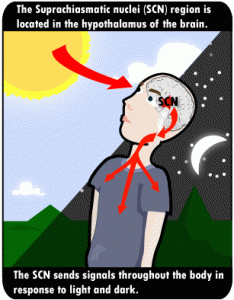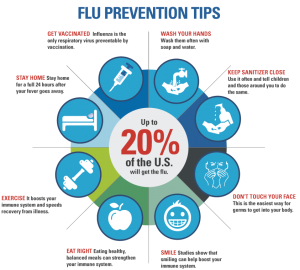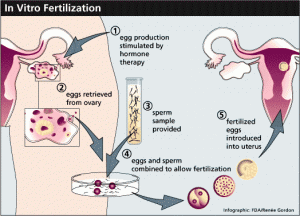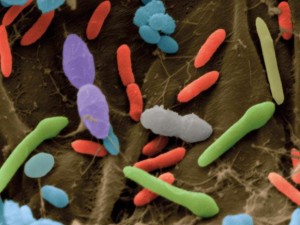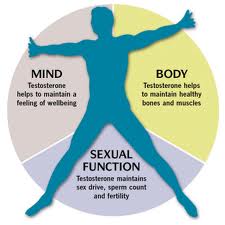You have seen it many times before: a man or a woman retires at age 65; for a while you see them around at social functions; then they are not seen any more and they return in a wheel chair only to die prematurely. You ask yourself: what can I do better to avoid this death trap?
There are several aspects to this equation: first, we would like to slow down the aging process. Part of this is to retain our physical functioning. In the following I am discussing the ingredients that are necessary to achieve the goal of aging in dignity, but avoiding disability.
It starts with a healthy mind set
You need to be optimistic and have a mindset of believing in yourself that you can do it. With a negative attitude, you will manage to find something to complain about, no matter how perfect the day has been. Negative thinking is rampant, and depression tends to be higher in the older population. If you suffer from depression or you had negative events such as accidents or abuse in the past, it is important to do some house cleaning. Do not be hesitant seeking professional help and counseling from a health professional to help you build up your self-esteem.
Regular exercise is important
A regular exercise program helps you to get your day organized. If you think that you are too busy to find the time to exercise, you are sacrificing your wellness and in fact you sabotage your health. It’s time to rethink your lifestyle! The reason you need exercise is to set the automatic pilot on staying healthy and active. If you are accustomed to sitting down in front of the computer or television set for hours, your muscles do not get the exercise they need. Fast-forward several decades and you will be one of those who rely on walkers, wheel chairs and assisted living establishments. Without training your muscles you are more prone to falls and injuries. Your balance organ is not getting the impulses it needs on an ongoing basis to prevent you from falls later in life. People in their 80’s are often stable up to the point where they trip and fall. I have seen many patients like this arrive in an ambulance where I was doing my shift as the emergency physician in a community hospital. When I summarize the fate of all of the people in their 80’s who had falls and broke their hips over the years, 50% of them made it through the surgery and went back home (often with a walker or in a wheel chair) or ended up in a nursing home; the other 50% died from complications of the surgery, often from heart attacks during the surgery or from clots in their pelvic veins or in the leg veins that dislodged and turned into pulmonary emboli. A fracture and in particular a hip fracture in your 80’s is a serious, potentially deadly accident. So, you need strong muscles and joints and you need strong bones. All of this comes free to you from years of regular exercise in your 60’s and 70’s.
You guessed right: good nutrition is important!
Eat right and your body will function right. This is where a lot of people are sent on the wrong path due to clever advertising from the Agro Industry, Big Pharma, the American Dietetic Association and the United States Department Of Agriculture. So they preach that wheat and wheat products are good for you, but the lab tests show that it induces hyperinsulinemia and leads to diabetes. The genetic changes of wheat (“accomplished” through forced chemical hybridization in the 1970’s) are responsible for the metabolically very active wheat belly (accumulation of visceral fat) that Ref. 1 has described in detail. But others have researched this topic as well. Ref. 2 for instance confirms that gliadin, the glue in wheat, which allows dough to stick and makes it easy to create bread, bagels and pasta, is responsible for neurological issues like numbness of fingers and feet (peripheral neuropathy), balance problems and cognitive decline all the way to Alzheimer’s disease. If you continue to eat wheat and wheat products (all contained in conveniently packaged “processed” foods), you may very well find that your balance and muscle control will deteriorate by the time you are in your eighties. This condition is not new: one of the lecturers I listened to at McMaster University in Hamilton, Ontario in 1977 referred to those unfortunate individuals who were severely disabled as the “tea and toasters”. The tea in this case was probably the lesser evil, but the wheat induced malabsorption and malnutrition was a reality already in the mid and late 1970’s.
However, if you start eating organic foods to avoid the chemicals and estrogen-like xenoestrogens from pesticides, and you cut out sugar, high-density carbs and wheat products, you will no longer have problems with weight control and you will maintain your muscle, brain and nerve function. This is not what you learn from the regular agencies mentioned at the beginning of this paragraph, but Ref. 1 and 2 will fill you in on the details. Essentially, I follow a Mediterranean diet without sugar, starchy foods and wheat or wheat products. Ref. 2 stressed the importance of enough saturated and healthy fat (omega-3 fatty acid rich oils) in a balanced diet consisting of 20% protein and low carbs. No specific numbers were given regarding the %-age of fat. I would say that a limit of about 25 to 35% for fat would be reasonable except for the Inuit who are used to a fat content in their diet of 80%. The new thinking is that healthy fats are good for your brain and heart. Healthy fats are omega-3 fatty acids (EPA and DHA) derived from fish oil as they are very protective (anti-inflammatory) oils, so is olive oil and coconut oil. These latter two are anti-inflammatory monounsaturated fatty acids. Keep in mind that you want to change the ratio of omega-3 to omega-6 fatty acids (the ratio in this link is cited as omega-6 to omega-3) more in the direction of omega-3 fatty acids, so that the ratio will be between 1:1 and 1:3. Most Americans are exposed to ratios of 1:8 to 1:16 (too many omega-6 fatty acids in fast food and processed foods), which leads to inflammation of the arteries as well. Omega-6 fatty acids, found in safflower oil, sun flower oil, grape seed oil and canola oil are bad for you when not balanced by enough omega-3’s (flax seed oil and fish oil) as they lead to inflammation through the arachidonic acid system in the body. It may be a surprise to you that saturated fats are OK: animal fat like butter, lard, cream, ghee (clarified butter), and other animal fats provided they come from clean (not antibiotic or bovine growth hormone treated) animals. Buy organic and buy organic meats as well such as grass fed beef and bison, chicken and turkey.
Here is an example of what a day would look like nutritionally in terms of a breakfast, lunch and dinner (recipes by Christina Schilling):
Breakfast: Great Greens Omelet
(2 servings)
1 tablespoon olive oil or coconut oil
3 chopped green onions
3 cups spinach leaves or a mix of greens: kale, spinach, Swiss chard
1 red pepper cut into strips
3 eggs and 3 egg whites
2 tablespoons grated Parmigiano
In non-stick pan sauté green onion, greens and pepper strips in oil, stir eggs and egg whites and pour over the vegetables, sprinkle with Parmigiano. Cook on medium heat, till the egg mixture has started to set. Turn over and briefly let cook. Remove from pan, divide into two portions and sprinkle with a bit of salt (optional). Serve with salsa and guacamole.
Lunch: Oriental Salad
(2 portions)
1 small Sui choy cabbage (Napa cabbage)
2 cups mung bean sprouts
1 small daikon radish, shredded to yield 1 cup
1 red pepper, cut into thin slices
3 green onions, chopped
1 medium sized carrot, cut into matchstick size pieces
1 can sliced water chestnuts, rinsed.
Dressing: 2 tablespoons sesame oil,
2 tablespoons rice vinegar,(light balsamic vinegar works too)
1-tablespoon tamari soy sauce
1 tablespoon Thai sweet chilli sauce
1-teaspoon fresh grated ginger
3 tablespoons chopped fresh cilantro
Prepare all vegetables and put into salad bowl. Stir all dressing ingredients together and pour over vegetable mix. Stir gently, cover and refrigerate. This salad can be consumed immediately or kept refrigerted for a day. To complete the salad with a protein portion add your choice of 6 oz. cooked shrimp or the same quantity of cubed or sliced grilled chicken.
Dinner: Florentine Chicken
(2 servings)
1 large boneless chicken breast
1 tablespoon of chopped fresh basil-alternatively use 1 teaspoon dried basil.
1 tablespoon grated Parmigiano
4 thin slices prosciutto
1 tablespoon olive oil
2 tomatoes- cut into halves
3 chopped green onions
2 cups baby spinach leaves
pinch of salt
Spread chicken breast flat and top it with the basil, Parmigiano and prosciutto slices. Fold into half an hold the stuffed chicken breast together at the edges with a toothpick or two. Heat olive oil in frying pan, add onion and tomato slices and put the chicken breast on top. Put lid on the pan, and cook at medium heat till the chicken is cooked through. If you test with a fork, the juices will be clear. Remove vegetables and chicken from pan, put on serving plate and keep warm. Remove toothpicks from meat, and cut chicken breast into two portions. Put spinach into pan and let the leaves wilt at medium heat (cover with lid). Put spinach on the side of the chicken and tomatoes, and sprinkle with a bit of salt.
Dessert after dinner: Berry Sorbet
(2 servings)
2 cups of deep frozen berries (strawberries, blueberries or a berry mix, no sugar added)
¾ cup of organic yogourt or goat’s milk yogurt
a few drops of liquid stevia or small amount of powdered stevia-to taste.
Put into blender and process till smooth. You will have to open the blender jar to stir the contents in between. Serve with a dollop of whipped cream, if desired.
What about the “slow down” of menopause and andropause?
It is a fact that as we age, our hormone glands do not produce as much hormones as when we were in our 20’s and 30’s. But if you find a health care provider who is interested in anti-aging medicine (there are about 26,000 physicians, chiropractors and naturopaths who are members in the A4M), your hormones can be measured accurately from saliva and blood tests. This will tell whether you are hypothyroid, deficient in sex hormones and whether you should be supplemented with the missing hormones in adequate doses through bio-identical hormones. For instance, women are often deficient in progesterone in menopause and men deficient in testosterone. Treatment needs persistence and patience, as it often takes months for the patient to feel better and up to 2 years, to find the exact balance for you where the hormones are re-balanced and your symptoms of tiredness, insomnia, hot flushes etc. disappear. All our body cells have hormone receptors that require stimulation for the cells to function normally. Your health professional needs to pay attention to this and not just treat your symptoms symptomatically. When your hormones are in balance and you take a few supplements, your bones will be strong (no osteoporosis), your brain will be clear, your hearing perfect, and your balance great. You will be much less likely in your eighties to fall and break a bone and your mind will be clear and sharp.
Stress management
As the baby boomers age, they need to be aware of the stress in their lives. You may have been accustomed to having lots of energy when you were in your child rearing years or in your active professional career. Often we do not even notice that there may be stress in our lives. But your adrenal glands know. This is really a subpart of what I said of hormones: they need to be in balance. But cortisol, which is produced in your adrenal glands, is different from the menopause/andropause hormones. Corticotrophin-releasing hormone (CRH) from the hypothalamus and adrenocorticotrophin hormone (ACTH) from the pituitary gland are the rulers of the adrenal glands. And it is how you handle stress when you are in your 40’s, 50’s and 60’s which will determine whether you come down with adrenal fatigue, various degrees of adrenal insufficiency or not. Ref. 3 is a whole book that deals with this topic. Here I like to mention only that the best test to diagnose adrenal problems is a four-point saliva hormone test for cortisol. You connect the four points and get a curve where the cortisol level is expressed as a function of time. If this curve is below the lower normal range, which the laboratory provides for you, you need to be managed by a knowledgeable health care professional in order to build up the reserves of your adrenal glands. Yoga, meditation, deep prayer, self-hypnosis and enough regular sleep are all proven methods to overcome any stress related issues. Sometimes more effort is needed to rebuild the adrenals by specific herbs or porcine adrenal gland cortex extracts. Your health care provider can tell you more regarding this.
Useful supplements
1. On March 17, 2013 I wrote in a blog about prevention of osteoporosis the following summary:
“The best combination is 1000 mg (or 1200 mg as per National Osteoporosis Foundation recommendation) of calcium per day together with 400 to 800 IU of vitamin D3 (for cancer prevention you may want to take 4000 IU to 5000 IU of vitamin D3 per day instead monitored by a 25-hydroxyvitamin D blood level test through your physician) and 100 micrograms of vitamin K2 (also called MK-7). In the age group above 50 missing hormones such as bioidentical testosterone in men and bioidentical progesterone/estrogen combinations in women should be given as well. This works best, if you also watch your weight, cut down your alcohol consumption to a minimum (or better cut alcohol out altogether), exercise regularly (this builds up bone and muscle strength) and stick to a balanced diet resembling a Mediterranean or zone type diet (low-glycemic, low fat, wheat free and no sugar).” I would add in view of Ref. 1 and 2 that “low fat” should now be replaced by “balanced fat diet”. With this I mean that nuts, almonds, olive oil, unsalted butter are allowed within reason. Lately there have been new insights that some cholesterol is needed for normal hormone production. What needs to be cut out are omega-6 fats and trans fats.
2. Omega-3-fatty acid supplements from molecularly distilled fish oil at a good dosage (3 to 6 capsules a day) will prevent chronic inflammation that often causes arthritis. Chicken cartilage (UC-II) from the health food store will desensitize your system in case you have rheumatoid arthritis or osteoarthritis. This will prevent crippling arthritic disease down the road.
3. Mitochondrial aging (the mitochondria are the energy packages in each body cell) is slowed down by the two supplements ubiquinol (=Co-Q-10, take 400 mg per day) and 20 mg of PQQ (=Pyrroloquinoline quinone). Co-Q-10 repairs DNA damage to your mitochondria and PQQ stimulates your healthy mitochondria to multiply. Between the two supplements you will have more energy.
4. Vitamin C 1000 to 2000 mg per day and a multivitamin supplement help to support the rest of your metabolism. Some may want to add PS (Phosphatylserine) 100 to 200 mg per day, which works together with vitamin D3 for Alzheimer’s prevention.
Conclusion
By now you noticed that nothing comes from ignoring the fact that we are aging. We need to pay attention to our body functions and think about what we can do to make us stronger. In the end we are our own caregivers. When we are in our eighties, we should still be active and our brains should function with a lot more experience than in our past. Our bones will be strong and our balance should prevent us from falling. I do not want to use assisted living and I do not like the confinement of a wheel chair. In the meantime I am going to carry on dancing.
More information on:
1. Fitness: http://nethealthbook.com/health-nutrition-and-fitness/fitness/
2. Nutrition: http://nethealthbook.com/health-nutrition-and-fitness/nutrition/
3. Vitamins, minerals and supplements: http://nethealthbook.com/health-nutrition-and-fitness/nutrition/vitamins-minerals-supplements/
References
1. William Davis, MD: “Wheat Belly. Lose the Wheat, Lose the Weight, and Find Your Path Back to Health”. HarperCollins Publishers LTD., Toronto, Canada, 2011.
2. David Perlmutter, MD: “Grain Brain. The Surprising Truth About Wheat, Carbs, And Sugar-Your Brain’s Silent Killers.” Little, Brown and Company, New York, 2013.
3. James L. Wilson, ND, DC, PhD: “Adrenal Fatigue, the 21sty Century Stress Syndrome – what is it and how you can recover”; Second printing 2002 by Smart Publications, Petaluma, Ca, USA
Last edited Nov. 7, 2014


